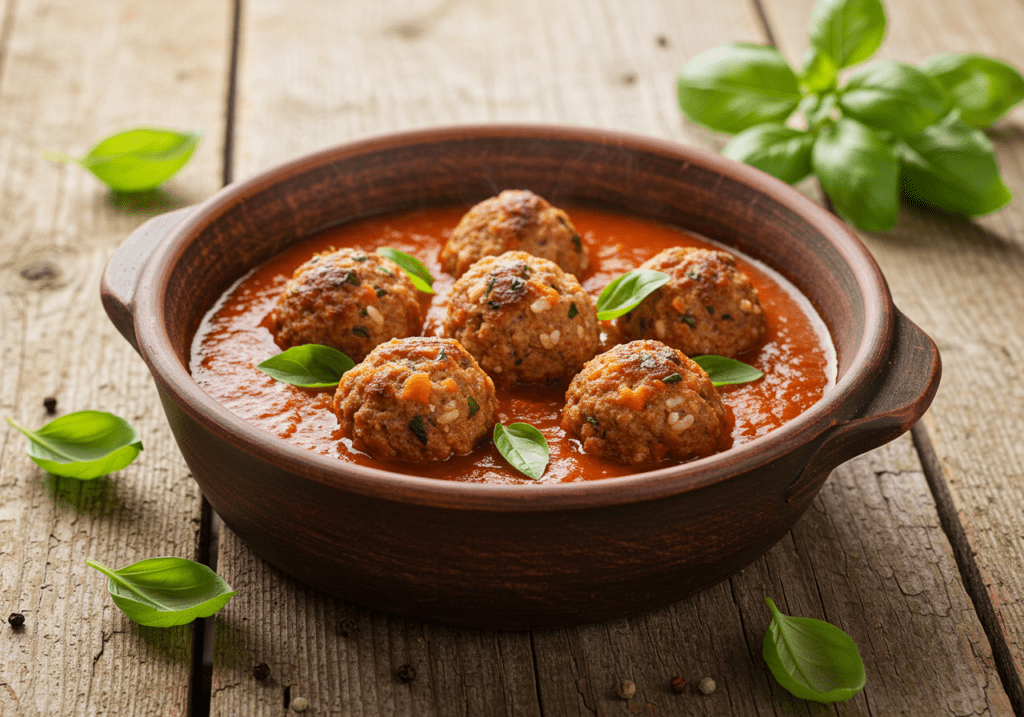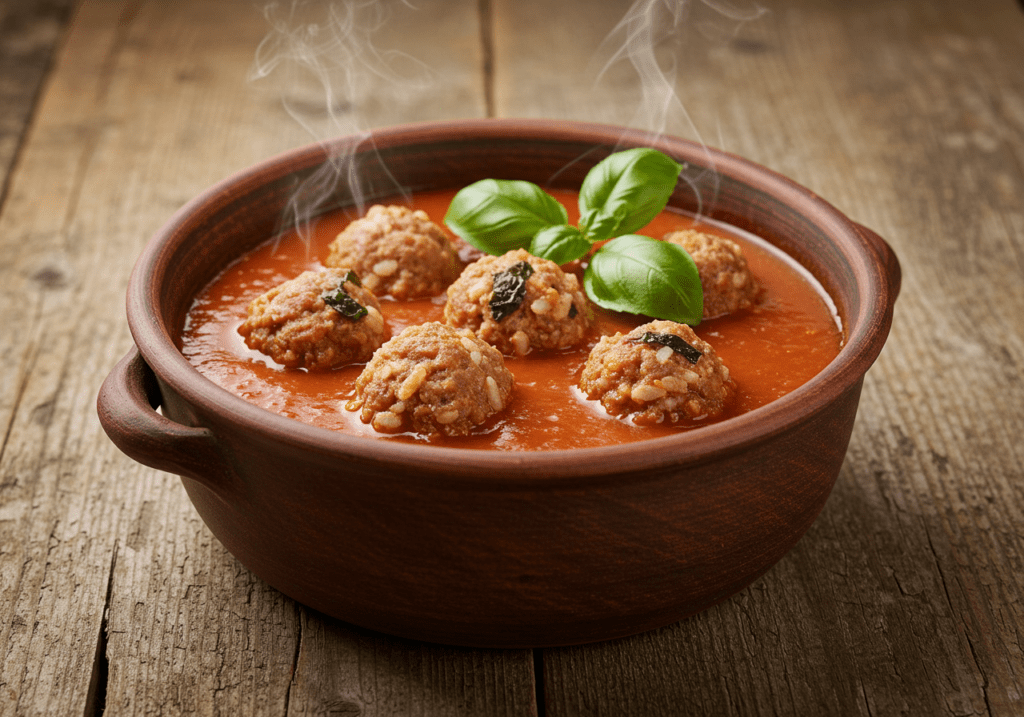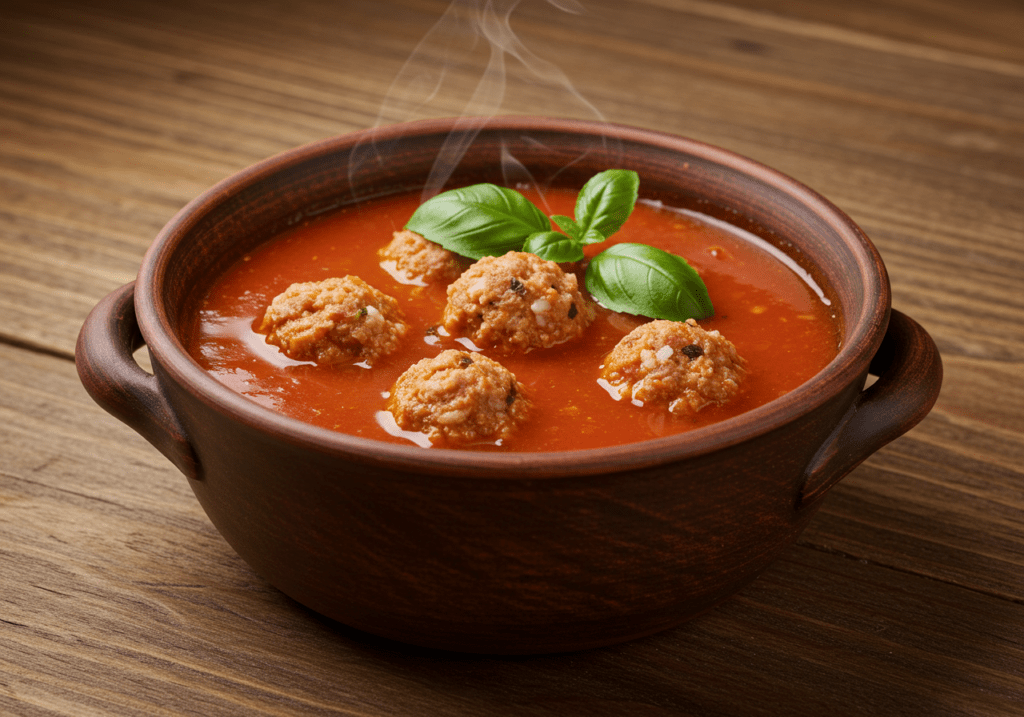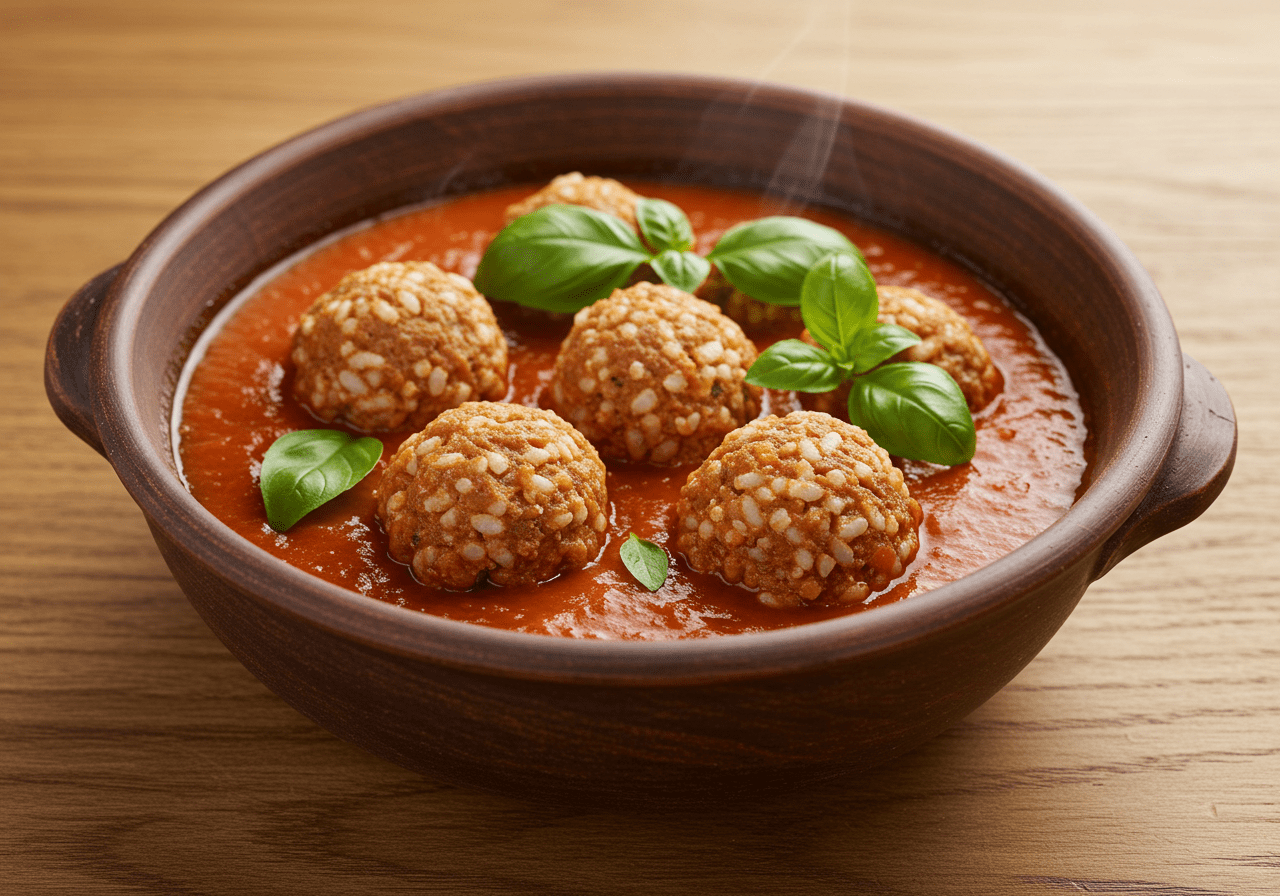Have you ever wondered what it would be like to taste a dish steeped in history, culture, and bold flavors? If you’re an adventurous foodie or someone looking to expand your culinary skills, porcupine soup might just be the unique recipe you’ve been searching for.
Despite its unusual name, porcupine soup is a hearty and nourishing dish enjoyed in various parts of the world. Whether you’re curious about its origins, eager to try a time-honored tradition, or simply in the mood for a comforting bowl of rich, aromatic soup, this guide will walk you through everything you need to know.
From selecting the best ingredients to mastering the perfect blend of spices, we’ll explore how to create an authentic porcupine soup that satisfies both the palate and the soul. You’ll also discover regional variations, serving suggestions, and even nutritional insights to help you appreciate this dish beyond just its taste.
So, are you ready to embark on this flavorful journey? Let’s dive into the art of making porcupine soup, one delicious step at a time.

Table of Contents
Ingredients & Preparation
If you’re ready to dive into the world of porcupine soup, the first step is gathering the right ingredients. A well-prepared dish starts long before it hits the stove—choosing high-quality ingredients and prepping them properly can make all the difference in flavor and texture. Let’s break it down step by step.
Essential Ingredients for Porcupine Soup
Every great recipe starts with a solid foundation. Here are the key ingredients you’ll need to create a rich and flavorful porcupine soup:
- Porcupine meat – The star of the dish! Ensure it’s fresh, cleaned, and properly prepared.
- Aromatics – Onions, garlic, and ginger add depth to the broth.
- Vegetables – Carrots, potatoes, and leafy greens enhance both flavor and nutrition.
- Broth or stock – A well-seasoned base makes all the difference. You can use homemade bone broth for added richness.
- Spices & herbs – Bay leaves, black pepper, and local seasonings will elevate the taste.
- Thickening agent (optional) – Some recipes use ground grains or root vegetables to add body to the soup.
Choosing the Best Meat for Authentic Flavor
Not all porcupine meat is the same. To get the best results:
Opt for fresh over frozen, as it retains more natural flavor.
Ask your butcher for properly cleaned meat to save time on prep.
If sourcing wild-caught meat, ensure it’s legally and ethically obtained.
Key Spices and Herbs to Elevate the Taste
The beauty of porcupine soup lies in its seasoning. The right blend of spices can turn a simple broth into a mouthwatering delicacy. Some must-have seasonings include:
- Bay leaves – Infuses the broth with an earthy aroma.
- Black pepper & chili – Adds warmth and a subtle kick.
- Turmeric – Not only enhances color but also offers anti-inflammatory benefits.
- Thyme or rosemary – Provides an herby, aromatic touch.
Want to experiment? Feel free to adjust the spice levels based on your preference.
Preparing Your Ingredients for Optimal Cooking
Proper preparation is key to ensuring your soup turns out flavorful and tender. Follow these steps:
- Clean the meat thoroughly – Rinse under cold water and pat dry. If using wild meat, consider soaking it in a mild vinegar or salt solution to remove any gamey taste.
- Chop your vegetables evenly – This ensures even cooking and a balanced texture in every bite.
- Toast your spices (if needed) – Lightly heating whole spices before adding them can intensify their flavor.
- Sauté aromatics first – Starting with onions, garlic, and ginger in oil helps create a rich flavor base before adding broth and meat.
By taking the time to select, season, and prepare your ingredients properly, you’re setting yourself up for a delicious, hearty porcupine soup that’s packed with both tradition and taste.
Up next, let’s get cooking!

Cooking Instructions
Now that you’ve gathered and prepped your ingredients, it’s time to bring your porcupine soup to life. Cooking this dish is all about patience and technique—allowing the flavors to develop and the meat to become tender. Whether you prefer a traditional slow-cooked method or a modern, quicker approach, this step-by-step guide will ensure your soup turns out rich, flavorful, and satisfying.
Step-by-Step Guide to Making Porcupine Soup
- Sauté the Aromatics – Heat a pot over medium heat and add a bit of oil. Sauté the onions, garlic, and ginger until fragrant. This step builds a deep flavor base for the broth.
- Brown the Meat – Add the porcupine meat and sear it on all sides. This locks in juices and enhances the overall taste of the soup.
- Add Spices and Herbs – Toss in bay leaves, black pepper, and any other chosen seasonings. Stir well to coat the meat evenly.
- Pour in the Broth – Add enough broth or water to fully submerge the ingredients. Bring to a gentle boil, then reduce the heat to low and let it simmer.
- Slow Cook for Maximum Flavor – Allow the soup to simmer for at least 2–3 hours. The longer it cooks, the more tender the meat becomes, and the richer the broth gets.
- Add Vegetables in Stages – Root vegetables like potatoes and carrots should go in about an hour before serving. Greens and delicate veggies should be added in the final 15 minutes to retain their texture and nutrients.
- Taste and Adjust – Before serving, taste the broth and adjust the seasoning as needed. A little extra salt, spice, or herbs can make all the difference.
Cooking Methods: Traditional vs. Modern Approaches
Want to experiment with different cooking styles? Here are two common methods for making porcupine soup:
Traditional Slow Cooking
- Uses a large pot over an open flame or stovetop.
- Allows deep, slow extraction of flavors.
- Requires more time but results in a rich, hearty broth.
Modern Pressure Cooking
- Uses an instant pot or pressure cooker to cut cooking time in half.
- Retains flavor while making the process faster and more efficient.
- Ideal for those who want to enjoy porcupine soup without the long wait.
Tips for Achieving the Perfect Texture and Flavor
Don’t rush the cooking process – Low and slow cooking brings out the best flavors.
Skim off excess fat – This keeps the broth clear and balanced.
Use fresh herbs when possible – They add brightness and enhance depth.
Let the soup rest before serving – Allowing it to sit for 10–15 minutes helps the flavors meld together beautifully.
By following these steps, you’ll have a steaming bowl of porcupine soup that’s packed with savory goodness and nourishing ingredients. Now, let’s explore some creative variations to make this dish even more exciting!
Variations & Enhancements
One of the best things about porcupine soup is its versatility. While the traditional recipe is already rich and flavorful, you can easily customize it to match your personal preferences, dietary needs, or even regional influences. Whether you want to add a new twist, make it vegetarian, or adjust the spice levels, there are plenty of ways to make this dish uniquely yours.
Regional Twists on Porcupine Soup
Different cultures have their own take on porcupine soup, adding unique ingredients and techniques to create distinct flavors. Here are some regional variations worth trying:
African-Style Porcupine Soup
- Uses a rich, spiced broth with tomatoes, peppers, and groundnuts for a deep, nutty flavor.
- Often served with fufu, rice, or traditional flatbreads.
Asian-Inspired Porcupine Soup
- Features ginger, lemongrass, and soy sauce for a fragrant, umami-packed broth.
- Sometimes includes noodles or dumplings for a hearty meal.
European Hearty Stew Variation
- Combines porcupine meat with root vegetables, bay leaves,for a slow-simmered, rustic stew.
- Served with crusty bread or mashed potatoes.

Vegetarian and Alternative Protein Options
Not a fan of porcupine meat or looking for a plant-based alternative? You can still enjoy a delicious, hearty soup with these swaps:
Mushrooms & Lentils – Mimic the texture and depth of porcupine meat while adding plenty of protein and umami.
Jackfruit – A fantastic meat substitute that absorbs flavors beautifully.
Tofu or Tempeh – Provides protein while keeping the soup light and satisfying.
Hearty Root Vegetables – Sweet potatoes, carrots, and turnips create a filling and nutritious base.
How to Adjust Spice Levels to Suit Your Taste
Spices play a major role in defining the soup’s overall flavor. Whether you love bold heat or prefer a milder taste, here’s how you can adjust the spice levels:
For Extra Heat:
- Add more chili peppers, black pepper, or a dash of cayenne.
- Try spicy broth bases like kimchi or fermented chili paste.
🫖 For a Milder Flavor:
- Use fewer hot spices and rely on aromatic herbs like thyme, rosemary, and basil.
- Balance heat with creamy elements like coconut milk or blended nuts.
🛠 For a Well-Rounded Taste:
- Incorporate a mix of warming spices (like cinnamon or nutmeg) to add depth without overpowering the dish.
- Experiment with citrus zest or vinegar for a subtle brightness.
By playing around with different variations, proteins, and spice levels, you can create a version of porcupine soup that perfectly suits your taste. Next, let’s talk about how to serve this dish to enhance its flavors even further!
Serving & Pairing Suggestions
Now that your porcupine soup is simmered to perfection, the next step is making sure it’s served in a way that enhances both its flavor and presentation. The right accompaniments can elevate the dish, turning it from a simple meal into a full dining experience. Whether you prefer traditional pairings or something creative, here’s how to serve porcupine soup in the best way possible.
Best Side Dishes to Complement Your Soup
Pairing your porcupine soup with the right side dish can bring out the richness of the broth and balance the flavors. Here are some great options:
Crusty Bread – A warm, freshly baked loaf is perfect for soaking up the flavorful broth. Try sourdough, baguette, or cornbread for added texture.
Steamed Rice – A classic choice that complements the savory flavors without overpowering them. Brown rice, jasmine rice, or wild rice can all work well.
Mashed Potatoes – If you want a heartier meal, serving porcupine soup with creamy mashed potatoes adds comfort and depth to every bite.
Grilled Corn on the Cob – The natural sweetness of corn balances the spiced broth and adds a delicious crunch.
Fresh Salad – A light, tangy salad with a citrus dressing can help cleanse the palate between bites. Try using arugula, tomatoes, and cucumbers for a refreshing contrast.
Ideal Drinks to Serve with Porcupine Soup
What you drink with your meal can make a big difference in how the flavors come together. Here are some drink pairings that work beautifully with porcupine soup:.
Herbal Tea – If you want something non-alcoholic, a cup of ginger or lemongrass tea adds warmth and digestion-friendly benefits.
Citrus-Infused Water – Adding lemon, lime, or orange slices to water brings a refreshing contrast to the hearty dish.
Presentation Tips for an Appealing Meal
They say we eat with our eyes first, so why not make your porcupine soup look as delicious as it tastes? Try these simple presentation tips:
🍽️ Use a Deep, Wide Bowl – This allows the broth, meat, and vegetables to be evenly displayed, making the dish more visually appealing.
Garnish with Fresh Herbs – A sprinkle of chopped cilantro, parsley, or green onions adds color and a fresh aroma.
Serve with Wooden or Ceramic Spoons – This gives a rustic and authentic touch to the dining experience.
Drizzle a Bit of Oil or Cream on Top – A swirl of coconut milk, olive oil, or chili oil can add contrast and make the dish even more inviting.
By paying attention to the details—from the sides you serve to the way you present your dish—you can transform your porcupine soup into a memorable meal. Now, let’s dive into the health benefits and nutritional value of this unique and hearty dish!
Health Benefits & Nutritional Value
Porcupine soup isn’t just a unique and flavorful dish—it also offers a range of health benefits. Packed with protein, essential nutrients, and immune-boosting properties, this soup can be a nutritious addition to your diet. Whether you’re looking for a hearty meal that fuels your body or a traditional dish with medicinal qualities, porcupine soup has plenty to offer.
Nutritional Breakdown of Porcupine Meat
Porcupine meat may not be as common as chicken or beef, but it’s surprisingly nutritious. Here’s what makes it a healthy protein choice:
High in Protein – Porcupine meat is rich in lean protein, which helps with muscle growth and overall body strength.
Rich in Collagen – The slow-cooked broth extracts natural collagen, which supports joint health and skin elasticity.
Good Source of Iron & Zinc – Essential for a strong immune system and proper oxygen circulation.
Lower in Fat Compared to Other Meats – A lean alternative to beef, making it a great choice for those watching their fat intake.
Immune-Boosting Properties of the Broth
One of the highlights of porcupine soup is its nourishing broth. When slow-cooked, the bones release essential minerals and nutrients that benefit overall health:
Bone Broth Benefits – Contains calcium, magnesium, and phosphorus, which support bone strength and overall wellness.
Gut Health Support – The gelatin in the broth promotes healthy digestion and may help with gut-related issues.
Hydration & Electrolyte Balance – The combination of broth, herbs, and vegetables helps keep the body hydrated and replenished with vital minerals.
Why This Soup is Perfect for Recovery & Wellness
Many cultures believe porcupine soup has healing properties, especially when it comes to recovery from illness, fatigue, or cold weather. Here’s why:
Natural Cold Remedy – The warm, spiced broth can help soothe sore throats and ease congestion.
Boosts Energy & Reduces Fatigue – Packed with essential nutrients, this soup provides long-lasting energy without being too heavy.
Supports Immunity – With a mix of protein, minerals, and herbs, porcupine soup can help strengthen the immune system.
Customizing the Soup for Dietary Needs
Want to make this soup even healthier or tailor it to your dietary needs? Here are some easy modifications:
For a Low-Carb Version: Skip starchy vegetables like potatoes and add more leafy greens.
For Added Fiber: Include fiber-rich ingredients like sweet potatoes, lentils, or whole grains.
For an Extra Nutrient Boost: Add turmeric, garlic, and ginger for their anti-inflammatory benefits.
Porcupine soup isn’t just a meal—it’s a powerhouse of nutrition that has been valued for generations. Whether you’re looking to fuel your body, support your immune system, or simply enjoy a comforting bowl of warmth, this dish delivers both flavor and wellness in every spoonful.
Now that you know the health benefits, let’s wrap up with some final thoughts on why you should try porcupine soup today!
Conclusion
Porcupine soup is more than just a meal—it’s a culinary adventure that blends tradition, flavor, and nutrition in every bowl. Whether you’re drawn to its rich, slow-cooked broth, intrigued by its unique taste, or excited to explore a dish with deep cultural roots, this soup offers an unforgettable experience.
Now that you know how to prepare, customize, and serve porcupine soup, why not give it a try? With its high protein content, immune-boosting properties, and comforting warmth, it’s a dish that nourishes both body and soul. Plus, with so many ways to adapt the recipe, you can make it uniquely yours—whether by adding bold spices, experimenting with regional flavors, or even opting for a vegetarian twist.
Have you ever tried porcupine soup before? What variations would you like to explore? Let’s keep the conversation going in the comments! And if you found this guide helpful, don’t forget to share it with fellow food lovers who might enjoy this one-of-a-kind dish. Happy cooking!
FAQs
1. Is porcupine meat safe to eat?
Yes! Porcupine meat is considered safe to eat when properly cleaned and cooked. It is lean, rich in protein, and packed with essential nutrients. Always ensure it is sourced ethically and cooked thoroughly to avoid any foodborne risks.
2. What does porcupine meat taste like?
Porcupine meat has a mild, slightly sweet flavor, somewhat similar to wild boar or rabbit. It absorbs seasonings and spices well, making it an excellent protein choice for hearty soups.
3. Can I make porcupine soup without porcupine meat?
Absolutely! You can substitute porcupine meat with chicken, beef, or even plant-based alternatives like mushrooms, jackfruit, or tofu while keeping the broth flavorful and nutritious.
4. How long should I cook porcupine soup?
For the best flavor and tenderness, porcupine soup should simmer for at least 2–3 hours. If using a pressure cooker, you can reduce cooking time to around 45 minutes.
5. Can I store and reheat porcupine soup?
Yes! Porcupine soup stores well in the refrigerator for up to 3 days. Simply reheat it on the stovetop over low heat. For longer storage, freeze it in airtight containers for up to 3 months.
6. What are the best herbs and spices to use in porcupine soup?
Popular choices include garlic, ginger, bay leaves, black pepper, and thyme. You can also add chili peppers or turmeric for extra warmth and depth of flavor.
Now that you’re armed with all the knowledge you need, it’s time to put it into action! Enjoy your cooking journey, and may your porcupine soup be as delicious as it is nourishing.

